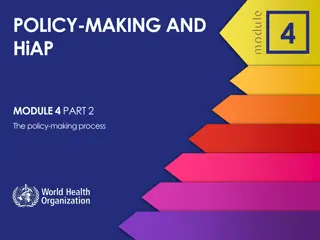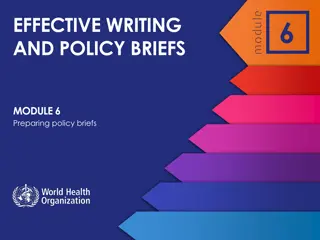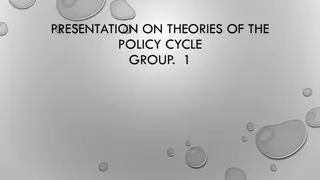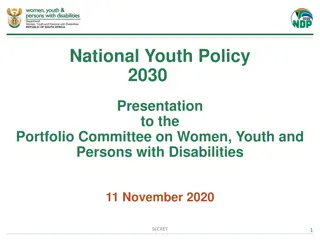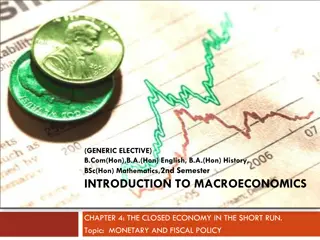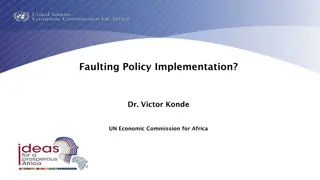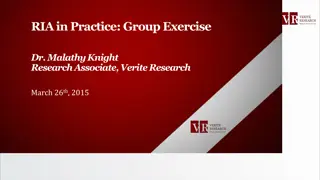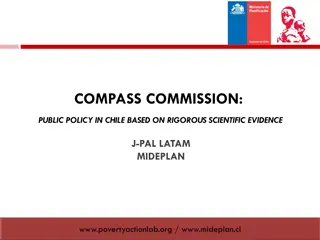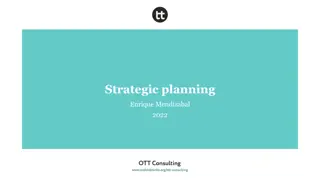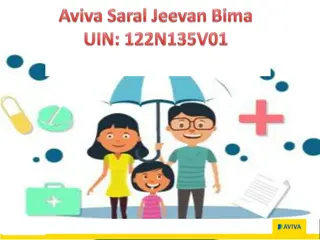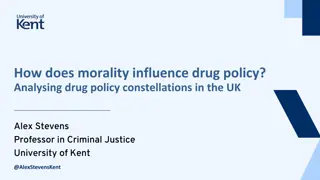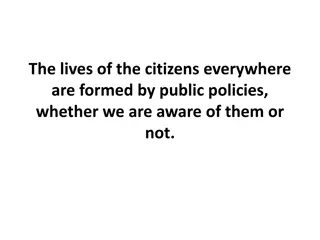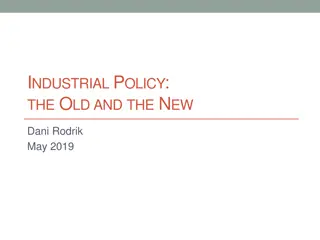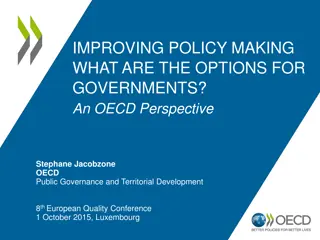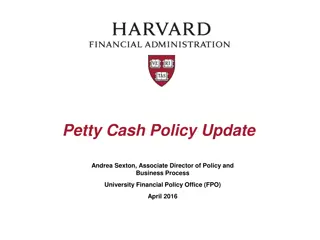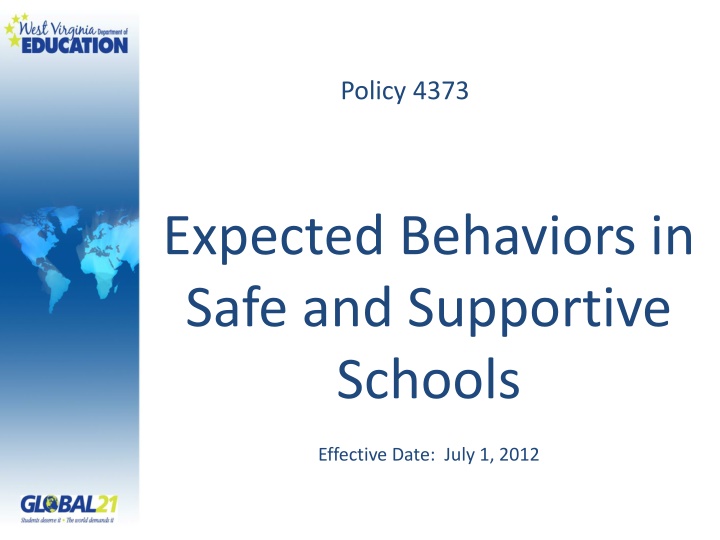
Expected Student Dispositions in Supportive Schools
Explore the expected behaviors and dispositions outlined in Policy 4373 for creating safe and supportive school environments, promoting wellness, responsibility, and good citizenship among students. The policy emphasizes social and emotional learning, intervention strategies for inappropriate behaviors, and proactive approaches to fostering a caring and safe school culture.
Download Presentation

Please find below an Image/Link to download the presentation.
The content on the website is provided AS IS for your information and personal use only. It may not be sold, licensed, or shared on other websites without obtaining consent from the author. If you encounter any issues during the download, it is possible that the publisher has removed the file from their server.
You are allowed to download the files provided on this website for personal or commercial use, subject to the condition that they are used lawfully. All files are the property of their respective owners.
The content on the website is provided AS IS for your information and personal use only. It may not be sold, licensed, or shared on other websites without obtaining consent from the author.
E N D
Presentation Transcript
Policy 4373 Expected Behaviors in Safe and Supportive Schools Effective Date: July 1, 2012
Policy 4373 Revisions Student Code of Conduct Expected Behavior in Safe and Supportive Schools Combines: 2418 Alternative Education 2421 Harassment 2422.5 - Substance Abuse 4372 Student Rights and Responsibilities 4373 Student Code of Conduct
WVBEVision . . . to provide an education that supports students to develop into healthy, responsible, and self- directed citizens who have the knowledge and Global21 skills to lead satisfying and productive lives. (Intro.)
Within this vision . . . . . .a goal for all students to develop personal skills and dispositions of wellness, responsibility, self-direction, ethical character, cultural awareness and good citizenship in an environment that is caring and safe. (Intro., WVBE Goal #2)
The Big Picture Dispositions Social and emotional learning: explicit curriculum Safe, supportive environments: implicit learning Collective responsibility of all VISION Proactive Approach PREVENTION Social and emotional learning Core areas Context for learning Standards and objectives Explicit Curriculum INTERVENTION Essential components Inappropriate behaviors Interventions and consequences Implicit Learning
Table of Contents Ch. 1 Expected Student Dispositions Ch. 2 Student Rights and Responsibilities Ch. 3 Planning for Policy Implementation Ch. 4 Inappropriate Behaviors and Meaningful Interventions and Consequences Ch. 5 Procedures for Addressing Allegations of Inappropriate Behaviors Ch. 6 Procedures for Taking Action on Substantiated Inappropriate Behaviors
Chapter 1 Expected Student Dispositions Sec. 1 Rationale for Developing Dispositions Sec. 2 School and Community Social Skills Standards Self-awareness and Self-management Social-awareness and Interpersonal Skills Decision-making Skills and Responsible Behaviors
What are dispositions? the values, commitments and ethics - that - influence one s behaviors toward others, and affect learning, motivation and development. (Ch. 1, Sec. 1)
Dispositions reflect Values such as Caring Fairness Honesty Responsibility Social Justice (Ch. 1, Sec. 1)
Socially Competent Students are Skilled in Three Core Areas: Self-awareness and Self-management + Social-awareness and Interpersonal Skills + Decision-making Skills and Responsible Behaviors (Ch. 1, Sec. 2)
Standards and Objectives: 2nd 4th
Standard 1: Self-awareness and Self-management This standard promotes the development of self- esteem and the identification of emotions leading to student self-efficacy to express themselves in constructive ways. These skills enable students to > control impulses > manage stress and > motivate themselves to establish, monitor and achieve academic and personal goals. (Ch. 1, Sec. 2)
Grades 2-4 Objectives 2-4.1.01 2-4.1.02 2-4.1.03 2-4.1.04 2-4.1.05 Self-awareness and Self-management Students will: Describe a range of emotions and the situations that cause them. Describe and demonstrate ways to express emotions in a socially acceptable manner. Describe personal skills and interests that one wants to develop. Describe the steps in setting and working toward goal achievement. Describe and demonstrate ways that healthy habits contribute to goal achievement. Example Behaviors that document mastery of Self-awareness and Self-management Individual Behavior: Complete work on time Internalize class routines Maintain good grooming Maintain healthy habits Avoid inappropriate physical contact Express enthusiasm for school Express confidence and positive self-esteem Ignore distractions Practice basic internet safety Initiative Interaction: Make relevant remarks during classroom discussion Express emotions in non-violent ways Choose activities that express one s interest and strengths Ask peers for help Make invitations Responsive Interaction: Listen when others speak Participate in group activities Help peers when asked Accept ideas different from one s own Interact appropriately with adults Express sympathy Follow verbal and written directions
Standard 2: Social-awareness and Interpersonal Skills Social-awareness involves recognition of the thoughts, feelings and perspectives of others, including those that are different from one s own. Interpersonal skills involve > cooperating > communicating respectfully and > constructively resolving conflicts Both are essential for building and maintaining positive relationships that are essential to success in school and life. (Ch. 1, Sec. 2)
Standard 3: Decision-making Skills and Responsible Behaviors Decision-making requires an ability to accurately assess a variety of situations, define and evaluate choices, anticipate consequences of each, generate alternative choices and select a responsible choice. Responsible behaviors are those that > promote safety > avoid risk > deal honestly and fairly with others > contribute in a positive way to one s classroom, school, family and community (Ch. 1, Sec. 2)
How are the Social and Emotional Learning Standards to be used? The social and emotional learning standards are not expected to be documented in individual teacher lesson plans but rather should serve as a framework for school-wide student behavior expectations as determined by each school faculty. (Ch. 1, Sec. 2)
Social and Emotional Learning is addressed through WV Board of Education policies such as: 2315 - Guidance and Counseling 2520.4 - Social Studies 2520.55 - Wellness PreK-4 2520.5 - Health Education 5-12 2520.6 - Physical Education 5-12 2520.14 - Learning Skills and Technology Tools 2520.15 - Early Learning Standards Framework: Content Standards and Learning Criteria for West Virginia Pre- Kindergarten (WV Pre-k) 2520.19 - Advisor/Advisee 5-12
Sample of Crosswalk Learning Skills and Technology Tools 2520.14 Health Education (5-12) 2520.5 Physical Education (5- 12) 2520.6 Guidance and Counseling 2315 Advisor/Advise e (5-12) 2520.19 Social Studies 2520.4 Grade 7 Standard 1: Self-awareness and self-management Objectives Students will: HE.7.7.04 identify strategies to reduce stress, anxiety and depression. PE.7.3.03 participate in physical activities both in and outside of school (e.g., physical education class, intramural s, recreation leagues). 7.1.3. a. Students will demonstrate the ability to balance school, studies, extra-curricular activities, leisure time and family life. 7.1.2 a. Students will demonstrate the motivation to achieve individual potential. 21C.O.5- 8.3.LS.5 Student exhibits interpersonal and problem- solving skills when in the role of leader. He/she helps others stay focused on the goal, monitors progress of the group, and successfully moves the group toward the goal. 7.1.02 Apply strategies to manage stress and to motivate successful performance.
Reflect: 1) How is explicit instruction for expected behaviors currently being done in your school? 2) How is implicit instruction for expected behaviors currently being done in your school? 3) What does this policy expectation mean for schools and teachers?
In what context must this learning take place? Competence in the use of these skills is promoted in the context of safe and supportive school, family and community learning environments in which students feel valued, respected, connected to and engaged in learning. (Ch. 1, Sec. 2)
Whose Responsibility is This? It is the collective responsibility of all school staff and all community partners to assume an appropriate role in teaching and supporting social and emotional learning skills. (Ch. 1, Sec. 2) Parents, teachers and community members, by fostering a sense of cooperative responsibility, can reinforce one another s efforts. (Ch. 3, Sec. 1)
Survey Data from 42 WV Schools Spring 2011 During the past 30 days, 18% of students reported smoking cigarettes at least once 13% reported using smokeless tobacco at least once 29% had at least one drink of alcohol 19% had five or more drinks in a row within a couple of hours (Binge drinking) 15% used marijuana 29% of students felt that student depression was a moderate or severe problem in their school During the previous 12 months, 15% said they seriously considered attempting suicide Obviously, schools cannot address these problems effectively without support from community organizations and agencies.
How are parents involved? Parents, as their children s first and most enduring teachers, can complement their children s school learning and behavior by serving as collaborators in the educational process. (Ch. 3, Sec. 1)
And the community? Community involvement, including strong business partnerships, promotes a safe and supportive school climate/culture that connects students to a broader learning community. (Ch. 3, Sec. 1)
Chapter 2 Student Rights and Responsibilities Sec. 1 The Right to a Thorough and Efficient Education Sec. 2 Student Inquiry and Expression Sec. 3 Non-curriculum Related Student Groups Sec. 4 Extra-curricular Activities Sec. 5 Privacy Sec. 6 Protection from Unreasonable Searches and Seizures Sec. 7 Child Abuse Prevention (Refer to Chapter 2 for details)
Sections in Chapter 2 with Changes Section 1-School supplies Section 2-Electronic communications Section 4-GED participation in Extra- Curricular Activities
Chapter 3 Planning for Policy Implementation Sec. 1 Conceptual Framework Sec. 2 Responsibilities of the West Virginia Board of Education Sec. 3 Responsibilities of the Regional Education Service Agencies Sec. 4 Responsibilities of County Boards of Education Sec. 5 Responsibilities of Schools
If the School Climate/Culture is Positive Students, Staff and Parents Feel: Safe . . . emotionally, intellectually and physically Engaged Respected (Ch. 3, Sec.1)
What a Positive School Climate/Culture Looks Like? characterized by warmth, positive interest, and involvement by adults firm limits to unacceptable behavior where non-hostile, non-physical negative consequences are consistently applied in cases of violations of rules and other inappropriate behaviors adults act as authorities and positive role models (Olweus, D., Limber, S. & Mihalic, S.F. (1999). Bullying Prevention Program. Boulder, CO: Center for the Study/Prevention of Violence) 30
How does the policy support this? In order to convey a pervasive and consistent message that these valued dispositions are a priority, all students, staff and public guests of West Virginia public schools shall behave in a manner that promotes a school climate/culture that is safe and supportive and conducive to developing our valued dispositions. (Ch. 3, Sec. 1)
Where do Expectations Apply? Conduct expectations apply to all students, staff and public guests: -> on school property, -> on school owned/leased buses and vehicles, -> at school bus stops and -> at sponsored events. (Ch. 3, Sec. 1)
Planning for Policy Implementation Responsibility WVBE/WVDE RESA County BOE School Policy Development X X Partnership Development X X X X Training and Technical Assistance Policy Dissemination and Training Implementation Plan X X X X X X Evaluation of Effectiveness X X X
Based on a dozen years of experience implementing the West Virginia Model for Positive School Climate, these minimums in Policy 4373 express What Works! They describe Essential Components of a Safe and Supportive School
At a minimum, schools shall: Establish a leadership team and a process to gain school-wide input and commitment to manage the design, monitoring and improvement of school climate/culture (Ch. 3, Sec. 5)
At a minimum, schools shall: Make data driven improvement decisions based on school climate/culture data to set school-wide improvement priorities/plans
At a minimum, schools shall: Implement programs/practices that promote Universal youth asset development Targeted at-risk group interventions Referral processes for intensive interventions
What interventions are in place at your school? Level 3 Intensive Interventions Individual students Assessment-based Level 2 Targeted Group Interventions Some students (at-risk) Rapid response Level 1 Core Instructional Interventions All settings, all students Preventive, proactive
At a minimum, schools shall: Evaluate school climate/culture improvement process and revise as needed
How Will We Assess Progress? Climate/culture survey data Reduced referrals for inappropriate behaviors Decreases in absentee rate Increases in informal positive socialization A perceived sense of community Reduction in out-of- school and in-school suspensions If it s starting to look and feel like we imagined 40
Change is Slow and often Subtle Changing a school s climate is a process Not in big events, but steps implemented, strategically, over time. This process usually takes between 3-5 years. 41
Chapter 4 INAPPROPRIATE BEHAVIORS AND MEANINGFUL INTERVENTIONS AND CONSEQUENCES The purpose of these regulations is to provide schools with policy that creates and ensures an orderly and safe environment that is conducive to learning. (Ch. 4, Sec. 1)
The Charge Revisited This policy requires that all schools respond quickly and consistently to any behavior that disrupts the learning environment in a manner that effectively deters future incidentsand affirms respect for individuals. (Ch. 4, Sec. 1)
Sample for Level 1 Interventions & Consequences Behaviors LEVEL 1: Minimally Disruptive Behaviors disrupt the educational process and the orderly operations of the school but do not pose direct danger to self or others. Cheating A student will not plagiarize or copy the work of others or break rules to gain advantage in a competitive situation. Interventions for this inappropriate behavior academic sanctions in addition to other discipline. Deceit A student will not deliberately conceal or misrepresent the truth, deceive another or cause another to be deceived by false or misleading information. Definitions Administrator/student conference or reprimand Administrator and teacher- parent/guardian conference Academic sanctions may be used to deny credit for work resulting from cheating; however, previously earned grades/credits may not be reduced. Counseling referrals and conference to support staff or agencies Daily/weekly progress reports Behavioral contracts may include Disruptive/ Disrespectful Conduct A student will not exhibit behavior that violates classroom/school rules, results in distraction and obstruction educational process or that is discourteous, impolite, bad mannered Behavior is considered disruptive and/or disrespectful if a teacher is prevented from starting an activity or lesson, or has to stop instruction to address the disruption. of the and/or rude.
Level 1 Minimally Disruptive Behaviors- disrupt the educational process and the orderly operations of the school but do not pose direct danger to self or others. Cheating Deceit Disruptive/Disrespectful Conduct Falsifying identity Inappropriate appearance Inappropriate display of affection Inappropriate Language Possession of inappropriate personal property Failure to serve detention Tardiness Vehicle parking violation Skipping class
Level 2 Disruptive and Potentially Harmful Behaviors- disrupt the educational process and/or pose potential harm or danger to self and/or others. The behavior is committed willfully but not in a manner that is intended maliciously to cause harm or danger to self and/or others. Gang-related activity Habitual violation of school rules or policies Insubordination Leaving school without permission Physical fight without injury Possession of imitation weapon Possession of knife not meeting dangerous weapon definition Profane language/obscene gesture/indecent act toward employee or student Technology misuse
Level 3 Imminently Dangerous, Illegal and/or Aggressive Behaviors-are willfully committed and are known to be illegal and/or harmful to people and/or property. Battery against a student False fire alarm Gambling Larceny Sexual misconduct Inhalant abuse Imitation drugs Substance containing tobacco/nicotine Defacing school property/vandalism Fraud/forgery Hazing Trespassing Harassment/bullying/intimidation Threat of injury/assault against an employee or student Improper or negligent operation of a motor vehicle
Level 4 Safe School Act Behaviors- are consistent with those addressed in West Virginia Codes. Battery against a school employee Felony Illegal substance related behaviors Possession and/or use of dangerous weapon *Level 4 behaviors are used in the identification and classification of Persistently Dangerous Schools.
May Counties Reclassify Behaviors? County policies may reclassify Level 2 and 3 inappropriate behaviors depending on the severity or repetition of the behaviors and provided this reclassification assures that the treatment of the inappropriate behavior is consistent with West Virginia Code. (Ch. 4, Sec. 1)
May Counties Add Interventions and Consequences? County/school policies should identify appropriate and meaningful interventions and consequences that include, but are not limited to, examples provided in this policy. (Ch. 4, Sec.1)





